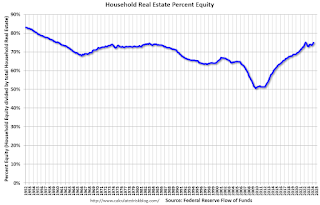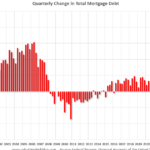by Calculated Risk September 12, 2024 12:29 PM
The Federal Reserve Board today released its Q2 2024 Flows of Funds Report. United States Financial Statements.
The net worth of households and nonprofit institutions increased to $163.8 trillion in the second quarter of 2024. The value of corporate stocks held directly and indirectly increased by $0.7 trillion, and the value of real estate increased by $1.8 trillion.
…
Household debt increased at an annualized rate of 3.2% in the second quarter of 2024. Consumer credit increased at an annualized rate of 1.6% and mortgage debt (excluding provisions for loan losses) increased at an annualized rate of 3%.

The first chart shows the net worth of households and nonprofit organizations as a percentage of GDP.
Net worth increased by $2.8 trillion in the second quarter, a new record. As a percentage of GDP, net worth increased in the second quarter but remains below its 2021 peak.
This includes real estate and financial assets (stocks, bonds, pension funds, deposits, etc.) minus liabilities (mainly mortgages), but does not include public debt.

When home prices plummeted in 2007 and 2008, household equity ratios (as measured by the Fed) plummeted.
The household equity ratio (of household real estate) was 74.9% in Q2 2024, up from 74.2% in Q1 2024. This is near the highest equity ratio since the 1960s.
Note: Includes households with no mortgage debt.

Mortgage debt increased by $98 billion in the second quarter.
Mortgage debt has increased by $2.34 trillion since the peak of the housing bubble, but as a percentage of GDP it is down 45.9% from the first quarter and down from its peak of 73.3% when the housing bubble burst.
Property values increased in the second quarter as a percentage of GDP, but remain below their peak in Q2 2022 and well above the average for the past 30 years.





